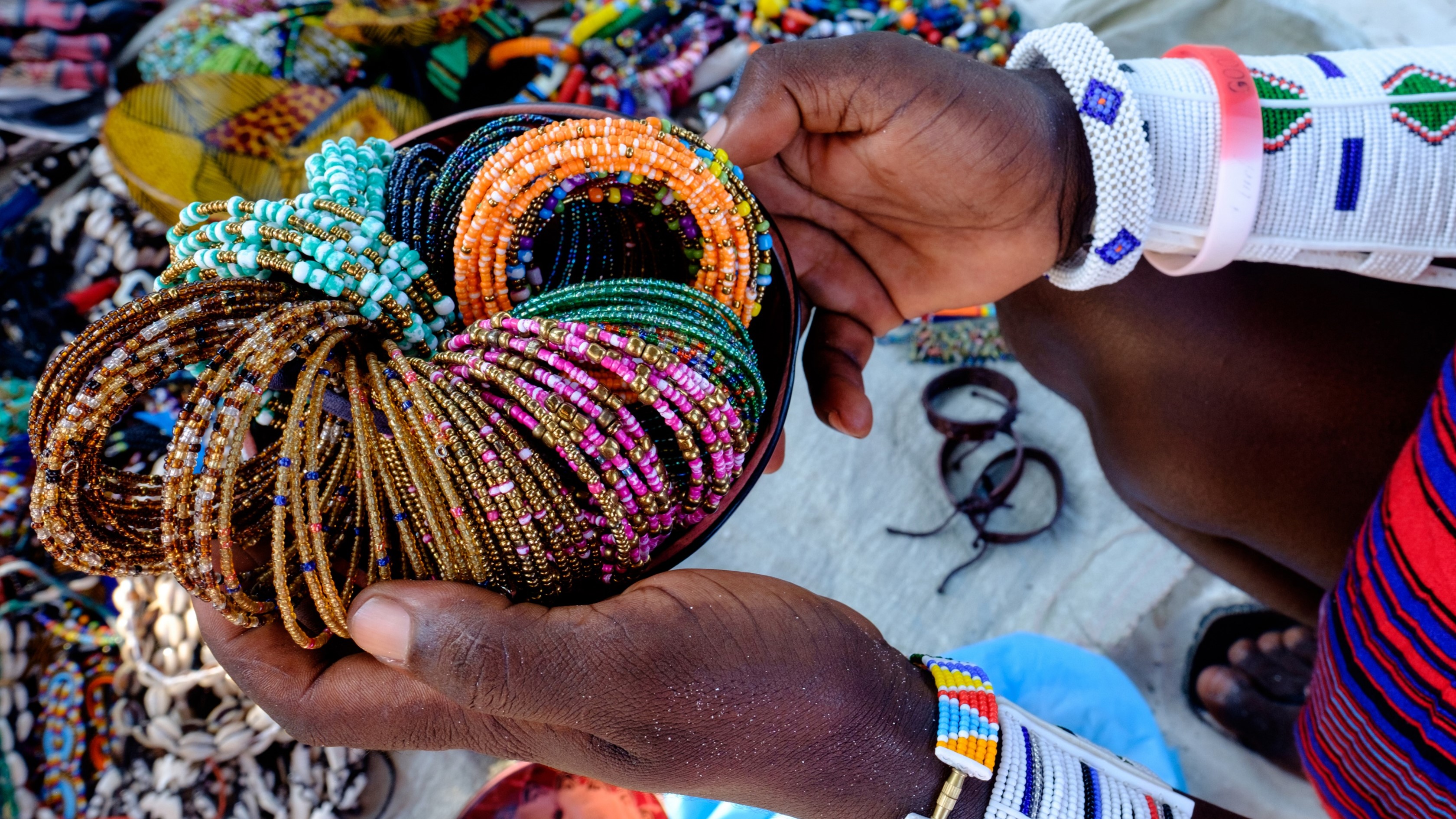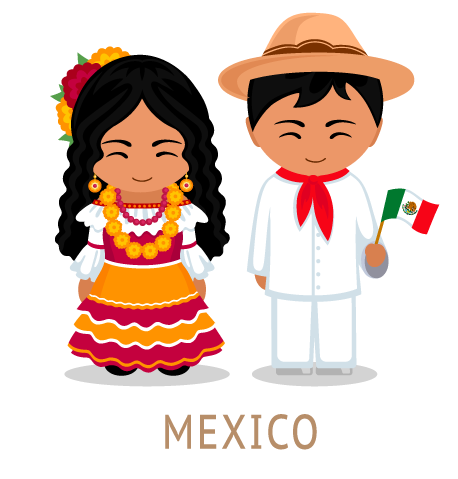
MEXICO
Tehuana: Consists of a loose fitting blouse matched with a long colourful skirt to cover much of the body as it is fastened higher in the torso instead of the waist. It is a traditional dress for women. The Tehuana dress has become a symbol of the region and the Zapotec culture, it's also considered a symbol of female empowerment, as the women of Tehuantepec have a strong tradition of self-sufficiency and leadership.
Sarape: It is a large blanket that is worn as a cloak, similar to a poncho in Brazil. Due to its size, it can also be used as a curtain, table cloth or even as a wall decoration. Mostly worn by men.
Rebozo: Similar to the Serape, it is mostly used by women as a cover around the head from the harsh sun. It is also used as an accessory to carry children and also keep warm in cold conditions. The Rebozo is an item of ancestry as most women inherit them from their mothers.
Resplandor: It is a head dress meant for women and made of white lace and decorated with ribbons. It is usually handmade. It is also tailored to give a tight fit around the face when worn.
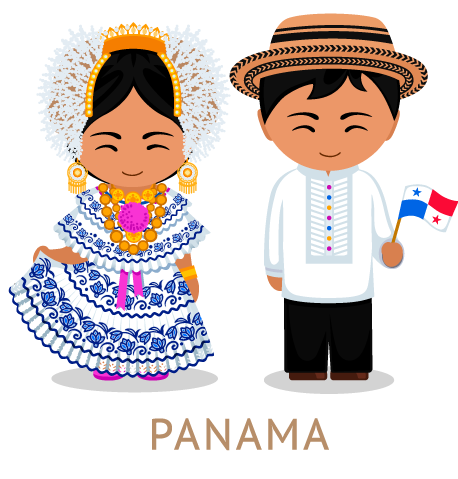
PANAMA
Gala Pollera: A type of dress carried on from the Spanish colonialists. It is usually worn with expensive jewellery during festive seasons. The dress is most times passed down to following generations since they are quite expensive to acquire. The Gala Pollera is a fancy type of pollera as it has more enhanced decorations on it.
Montuna Pollera: It is a more casual type of pollera as it is straighter and has less decorations on it.
Paja toquilla: A traditional Panama hat made from the fibers of the toquilla palm, worn by both men and women.
Mola: A traditional blouse or dress, made by the Kuna indigenous people, featuring intricate, colorful embroidery and applique.
Chacara: A traditional hat worn by men, made of palm leaves. It's typically worn in the rural areas of the country, especially by farmers and other manual laborers. The chacara is worn to protect from the sun and rain, it is made with a conical shape and has a wide brim.

CUBA
Guayabera shirt: A traditional casual shirt meant for men.
Guayabera dress: A dress meant for women and made of light cotton or linen and have a number of pockets. For decoration, the dress is usually embroidered or ribbons attached to it. The dress is also designed to be buttoned up.
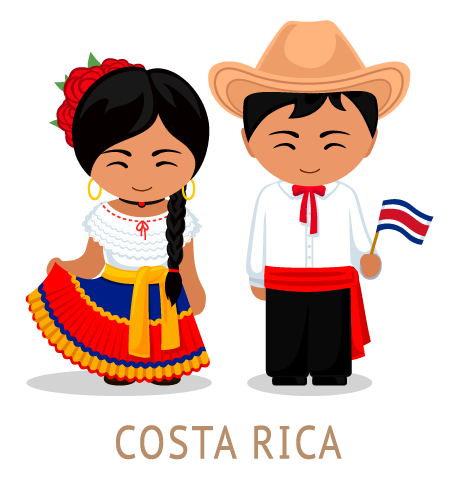
COSTA RICA
Golas: A female garment denoted by long bright coloured skirts worn with leather sandals. The torso is covered with flowered blouses with different colour combinations. The skirt is usually flares to allow for easy movement on dancing in festivals.
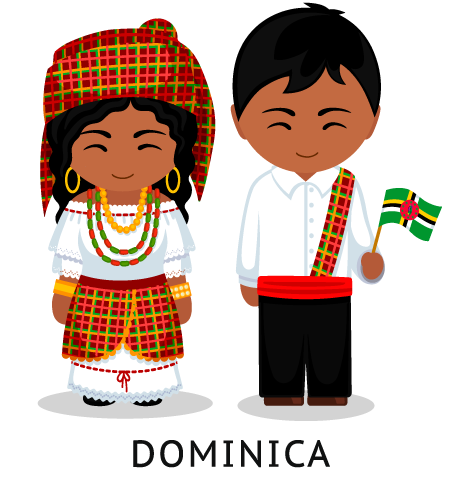
DOMINICA
Wob Dwiyet (“Grand Robe”) is made up of mouchoir, foulard, jupe, chemise, and “jupon a dantell. The wob dwiyet is worn by women, while the men dress in black slacks, awhite shirt and red sash.
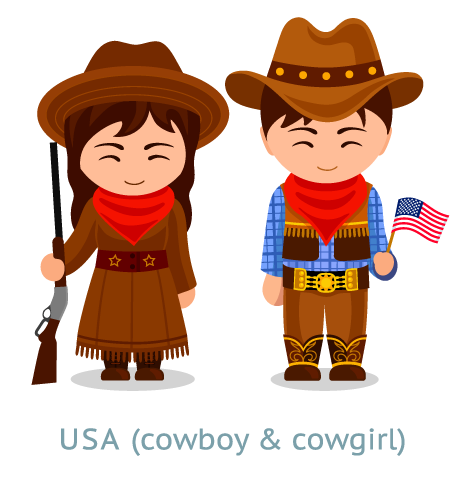
COWBOY COWGIRL
Chaps: a type of protective clothing that are worn over pants to provide additional protection for the legs while horseback riding or working with livestock. They typically cover the thigh and lower leg and are made of leather or other durable materials.
Fringe Jacket: a type of jacket that features long strands of fringe along the sleeves, back, and/or front often made of leather or suede and is popular among western and bohemian fashion styles. Fringe jackets can be adorned with various decorations such as studs, beads, and embroidery.
Western Shirt: a type of shirt often made of cotton or denim and features a yoke on the back and front, snap buttons, and pointed collars; can be decorated with various designs, such as plaid, paisley, or floral patterns.
Bolo Tie: a type of necktie that consists of a cord or braided leather string with a decorative metal or stone clasp at the center.
Handkerchief: a small square of fabric, often made of cotton or silk, that is often folded and worn as a bandana or neckerchief, adding a touch of color and pattern to an outfit.
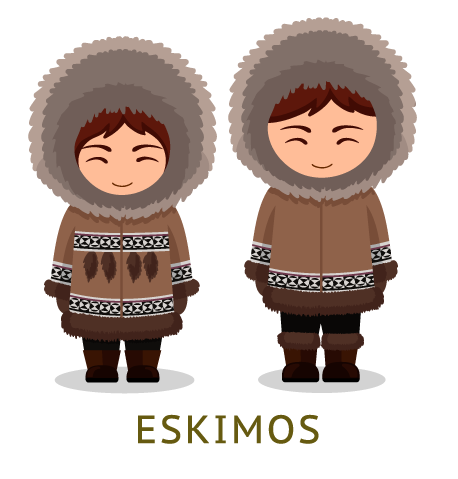
ESKIMOS
Parka: a traditional Eskimo garment that is made from animal hides, fur or modern materials like Gore-Tex. The parka is designed to keep the wearer warm and dry in cold and windy conditions. It often features a hood with fur trim, a drawstring to tighten the waist, and a flap over the zipper to prevent wind from entering.
Mukluks: traditional Eskimo boots that are made from animal hides, such as sealskin or caribou hide. The boots are designed to be warm, waterproof, and durable. They often have a thick sole made of animal hide, which provides insulation from the cold ground.
Amauti: a traditional Eskimo parka worn by women that has a large hood with a built-in baby carrier. The carrier allows the mother to carry her baby on her back while keeping the baby warm and protected from the elements.
Mittens: made from animal hides or fur and are designed to keep the hands warm in cold weather. They often have a separate compartment for the thumb, which provides greater dexterity.
Atikluk: a traditional Eskimo parka that is similar to the parka worn by other indigenous peoples in the Arctic region. It is often made from animal hides or modern materials and is designed to provide warmth and protection from the cold wind and snow.
Qaspeq: a traditional Eskimo tunic that is made from calico or cotton fabric. It is loose-fitting and can be worn over other layers of clothing. The qaspeq is often decorated with traditional Eskimo designs, such as geometric patterns or animal motifs.
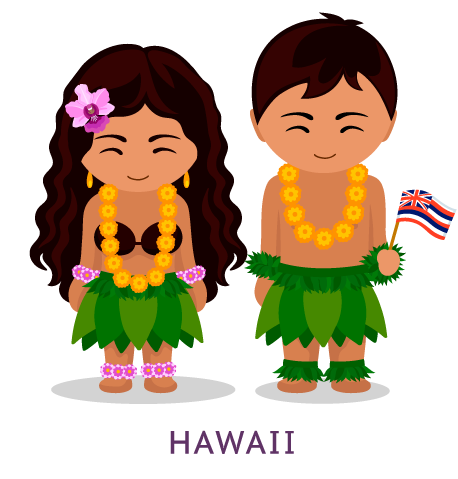
HAWAII
Malo - a traditional Samoan garment worn by men. It is a rectangular piece of fabric made from finely woven pandanus leaves or from bark cloth, and it is wrapped around the waist and hips. The malo is an important part of Samoan culture and is often worn for traditional ceremonies and events.
Pa'u - a traditional Hawaiian skirt worn by women originally made from the bark of the mulberry tree, but today it is made from a variety of materials including cotton and silk. The pa'u is often worn for hula dancing and other traditional Hawaiian events.
Kihei - traditionally made from kapa, a type of fabric made from the bark of the wauke tree, but today it is made from a variety of materials including cotton and silk.
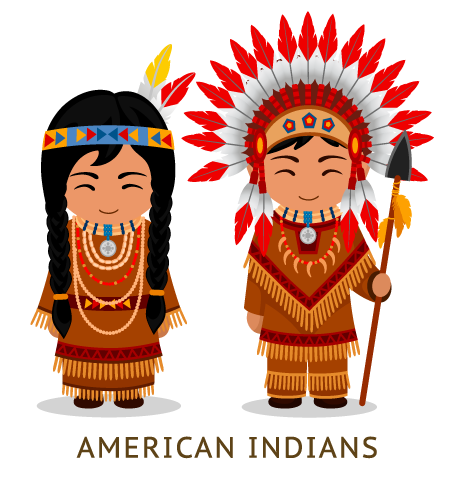
NATIVE AMERICANS
Mukluks: made from animal hides, such as sealskin or caribou hide. The boots are designed to be warm, waterproof, and durable. They often have a thick sole made of animal hide, which provides insulation from the cold ground.
War Shirt: a traditional Indigenous garment made of leather and decorated with fringe, beads, and other decorative elements.
Buckskin: a type of leather that is made from the hide of a deer or elk. It is often used to make traditional Indigenous clothing and accessories, such as moccasins, breechcloths, and shirts.
Fur Parka: a traditional Indigenous garment that is designed to provide warmth in cold weather.
Breechcloth: a simple garment worn by Native American men that covers the front and back of the waist and is typically made of leather, cloth, or animal hide. It is often worn with leggings.
War bonnet: a headdress traditionally worn by Native American Plains tribes such as the Sioux, Cheyenne, and Crow made of eagle feathers and is a symbol of honor and respect.
Roach headdress: A type of Native American headdress worn by men, especially in Plains tribes made of porcupine hair and is styled in a way that resembles the fur of a porcupine.
Moccasins: a type of footwear traditionally worn by Native Americans that is made of soft leather or animal hide. They are designed to be lightweight and flexible, allowing the wearer to move quietly and quickly through the environment.
.
